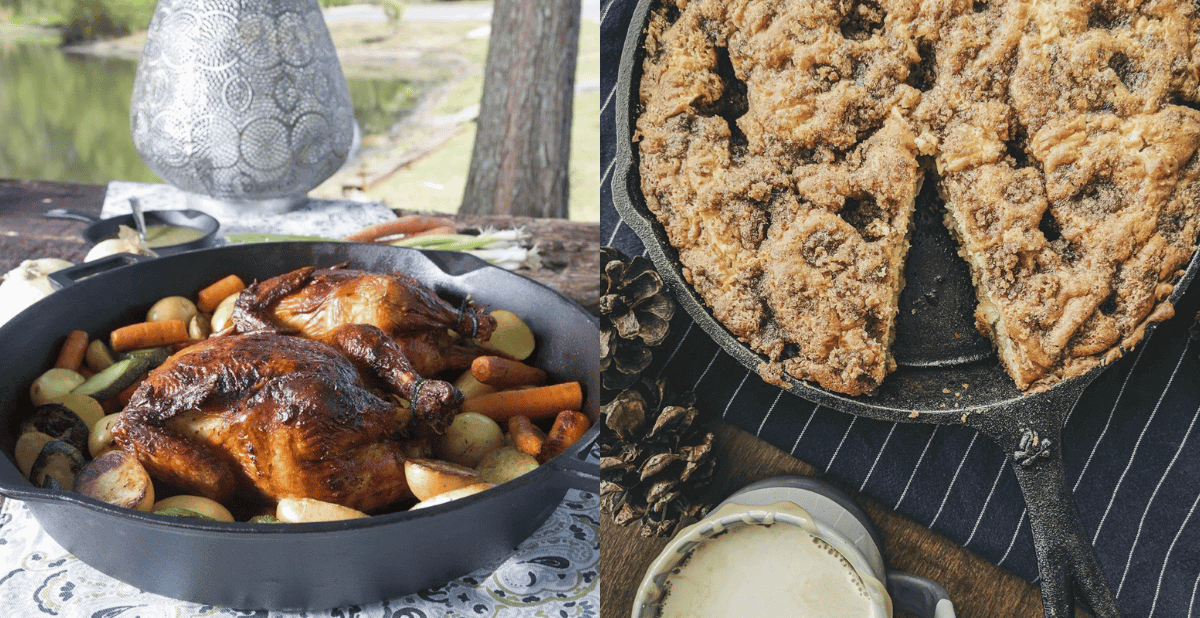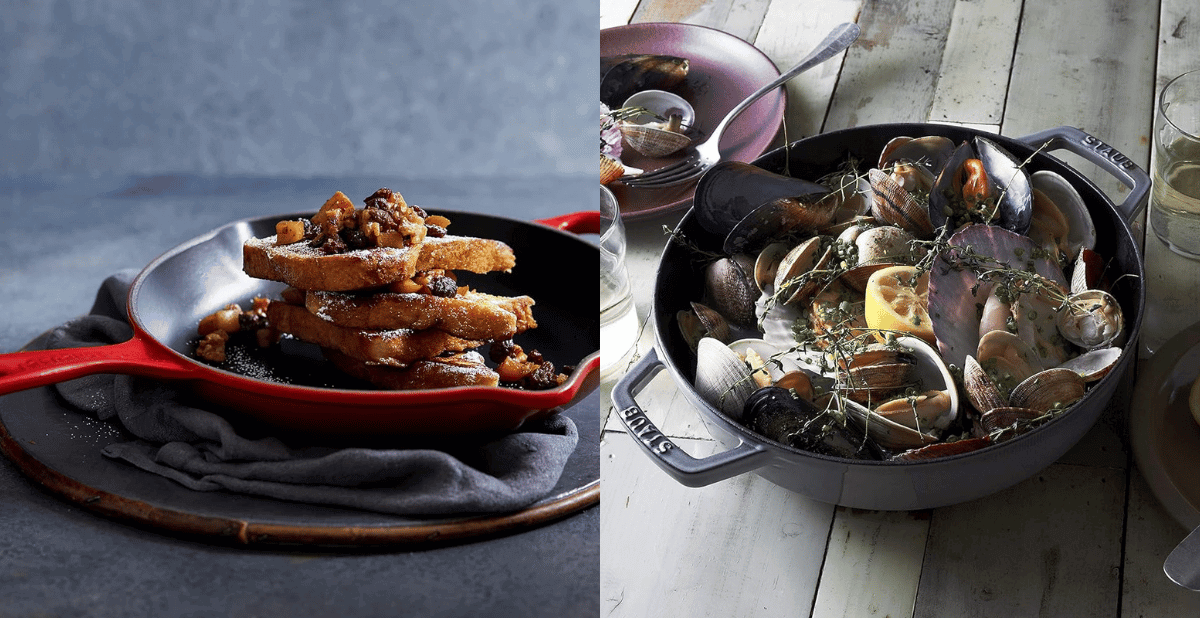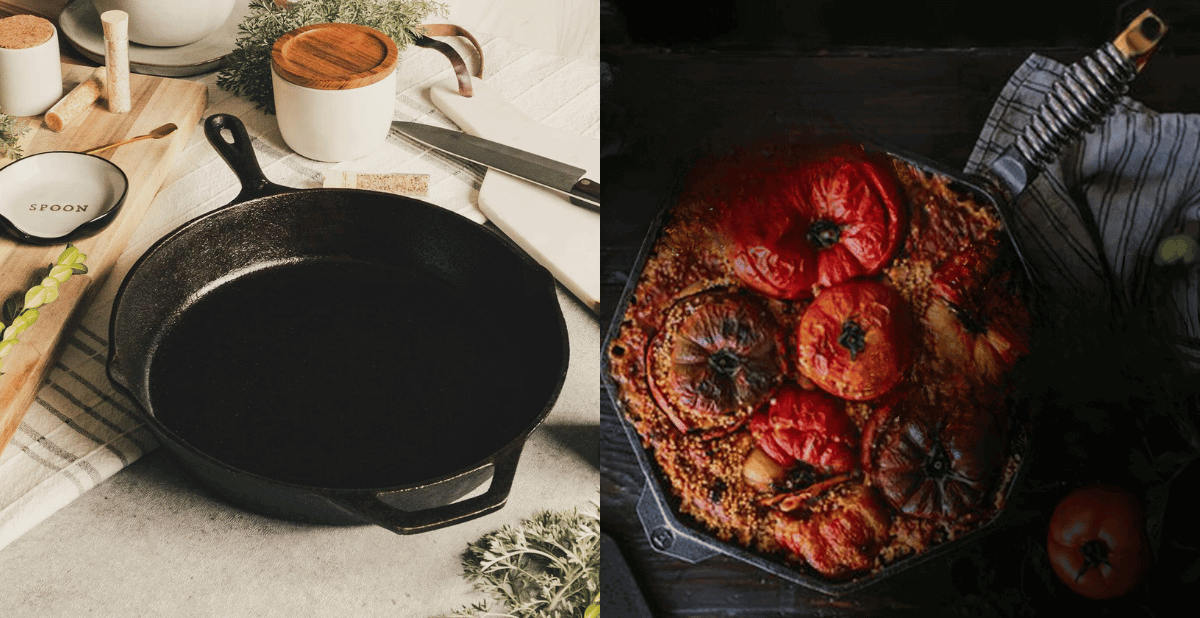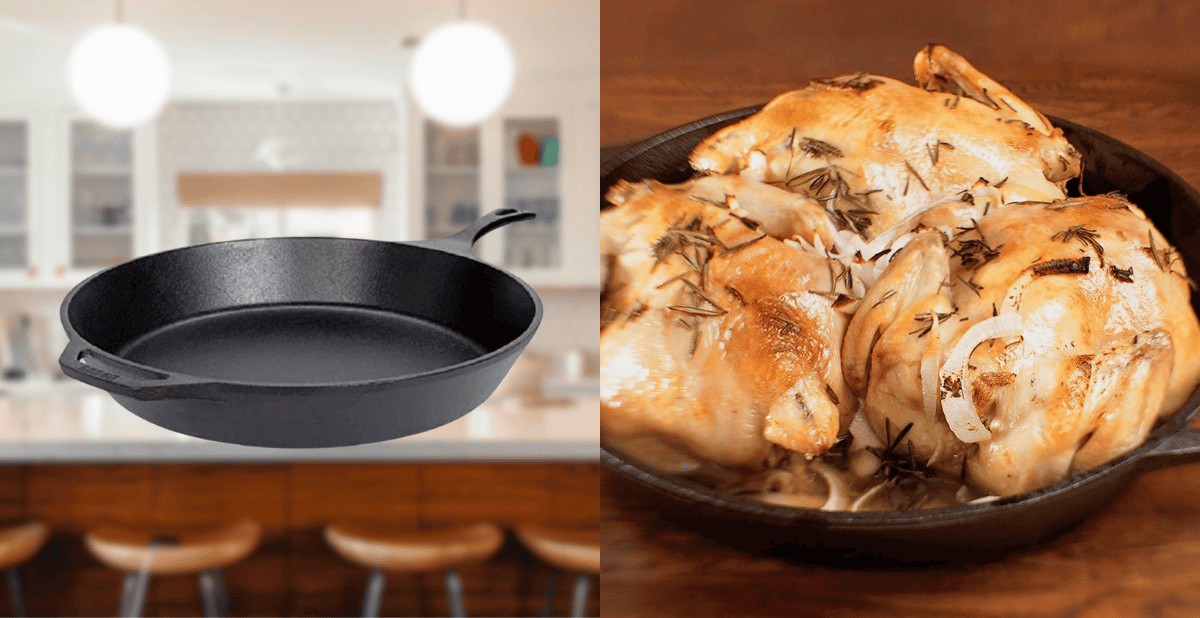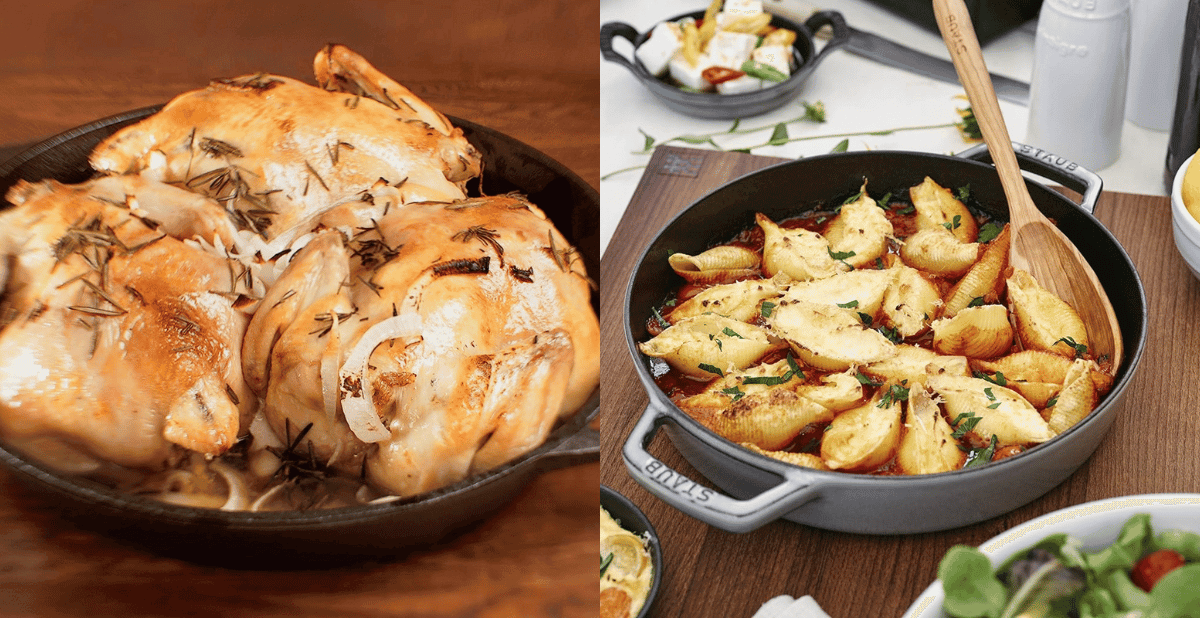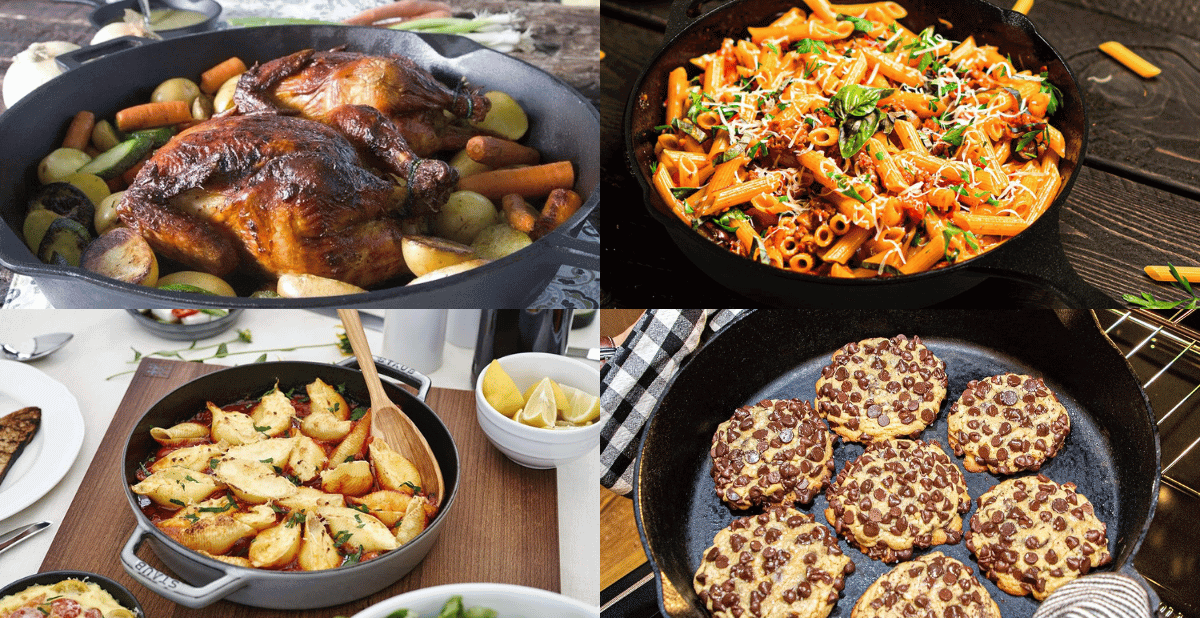When it comes to kitchen essentials, the cast iron skillet is a timeless classic. But with so many options available, the question arises: who made the best iron skillet?
Key Takeaways:
- Discover the history and craftsmanship behind the best-cast iron skillets on the market.
- Learn about the unique features that set the top cast iron skillets apart.
- Understand the importance of proper care and seasoning to maintain your skillet's performance and longevity.
The Quest for the Best Cast Iron Skillet
Regarding kitchen essentials, the cast iron skillet stands out as a timeless classic.
The answer isn't straightforward, as it depends on a variety of factors, including heat retention, durability, and cooking surface quality.
A Legacy of Craftsmanship: Traditional Cast Iron Skillets
Traditional cast iron skillets have been around for centuries, with most cast iron pans boasting a rich history of craftsmanship.
These skillets are known for their heat retention and versatility.
They can easily sear steaks to perfection and fry eggs.
The thicker cast iron used in these pans ensures even heat distribution, which is crucial for cooking at high heat.
Lodge Cast Iron Skillets: A Household Name
Lodge skillet is often the first name that comes to mind when discussing favorite cast iron skillets.
Lodge cast iron skillets are renowned for their durability and naturally nonstick surface, which improves with use.
The brand has been a staple in American kitchens for over a century.
It offers a range of sizes, including the popular 12-inch cast iron skillet.
Stargazer Cast Iron Skillet: The Modern Contender
The Stargazer cast iron skillet is a newer entrant, quickly becoming a favorite among cast iron enthusiasts.
Its smooth cooking surface and lighter weight make it a strong competitor.
Stargazer's attention to detail, including pour spouts for easy serving, sets it apart from other cast iron skillets.
Enameled Cast Iron Skillet: The Best of Both Worlds
For those who want the benefits of cast iron without the hassle of seasoning, the enameled cast iron skillet is an excellent choice.
These skillets feature a nonstick coating that requires less maintenance, making them a great option for those new to cast iron cooking.
Cuisinel Cast Iron Skillet: Quality on a Budget
If you're looking for an inexpensive cast iron skillet that doesn't compromise on quality, the Cuisinel is a top contender.
It offers great heat retention and a durable cooking surface at a price point accessible to most home cooks.
The Lightweight Champion: Butter Pat Skillet
The Butter Pat skillet is another standout, known for its lighter weight and smooth surface.
This skillet shows that a good cast iron pan doesn't have to be heavy to perform well.
Its heat conduction and seasoned surface make it a joy to cook with.
The Evolution of the Pour Spout in Cast Iron Skillets
Cast iron skillets have undergone numerous design tweaks over the centuries, but the pour spout is one feature that stands out.
The pour spout is a small yet significant addition that has made a world of difference in the kitchen.
In the early days of traditional cast iron skillet design, the absence of a pour spout made transferring liquids messy.
However, as skillet designs evolved, manufacturers like Lodge Cast Iron began incorporating pour spouts, making it easier for cooks to serve sauces or drain excess fat without the mess.
The modern Lodge Cast Iron Skillet includes a pour spout and has been perfected.
The spout's angle and size are designed to provide control and precision, ensuring that nothing spills over the sides.
This feature is particularly useful when cooking dishes that involve liquids, such as gravy or reductions.
It's a testament to how even the smallest design elements of tested cast iron skillets can significantly impact their functionality and the cooking experience.
The Science Behind Pan's Nonstick Capabilities
Cast iron skillets have been the go-to for chefs and home cooks due to their nonstick capabilities.
But what's the science behind this?
When you season a cast iron skillet, you create a polymerized layer by heating a thin coat of oil on the pan's surface.
This process, known as polymerization, transforms the oil into a plastic-like layer that adheres to the iron, filling in its natural porosity and creating a smooth, nonstick surface.
The more you cook with it and maintain this seasoning, the better the nonstick properties become.
The nonstick capabilities of a pan are not just about ease of cooking but also about health and flavor.
A well-seasoned cast iron skillet reduces the need for additional oils or fats, making for healthier cooking options.
Moreover, the nonstick surface ensures food is released easily, preserving its texture and taste.
This is particularly noticeable when searing meats or frying delicate items like eggs or pancakes, where the pan's nonstick quality can mean the difference between culinary success and a sticky mess.
The Impact of Heat Retention on Pan's Nonstick Capabilities
Have you ever wondered why some pans seem to effortlessly release food while others turn pancakes into a sticky mess?
It's all about heat retention, a key player in a pan's nonstick capabilities.
Cast iron skillets, with their thick walls and heavy bases, are champions at retaining heat.
This is crucial for creating that perfect sear without the food sticking.
This consistent heat means that once the skillet reaches the desired temperature, it stays there, allowing foods to cook evenly and release cleanly.
But it's not just about getting hot; it's about staying hot.
When you add cold food to a pan, the temperature can drop, and that's where cast iron's heat retention shines.
It minimizes this temperature drop, ensuring your food continues cooking in a hot, nonstick environment.
This is particularly important for proteins like steak or chicken, which need a high, consistent heat to form that delicious crust.
Remember, a well-heated cast iron skillet is less likely to let your food stick, making it a go-to for chefs aiming for perfection on the plate.
The Role of Pan Surface Smoothness in Nonstick Performance
When it comes to a pan's nonstick nature, the surface smoothness is a factor that can't be ignored.
In the old days, cast iron skillets were forged and polished to create a glass-like surface that naturally enhanced the pan's nonstick capabilities.
Today, many modern cast iron skillets have a slightly rougher texture, which can initially cause some sticking issues.
However, this isn't the end of the story for your skillet's nonstick future.
The beauty of cast iron lies in its ability to improve with use.
As you cook and season your skillet, oils, and fats polymerize and fill in any surface irregularities, gradually building up a smooth, natural nonstick coating.
This process contributes to the pan's nonstick capabilities and adds flavor complexity to your dishes.
So, while a brand-new cast iron skillet might require extra care to prevent sticking, it will eventually become the ultimate nonstick surface that home cooks and professional chefs treasure.
Cast Iron Skillets and Acidic Foods: Myths and Truths
There's a common belief that cooking acidic foods in cast iron skillets is a no-go.
This can damage the pan's nonstick capabilities and impart a metallic taste to the food.
However, this is only partially true.
While prolonged cooking of acidic foods like tomatoes or lemon juice can strip away the seasoning and potentially lead to rust, a well-seasoned skillet can handle occasional acidic ingredients without harm.
The key is not to let these foods simmer for hours and to re-season the pan if necessary.
Cooking acidic foods in a cast iron skillet can have benefits.
The iron from the pan can leach into the food, adding nutritional value, especially for those with iron deficiencies.
It's also worth noting that the pan's nonstick capabilities can prevent acidic foods from sticking and burning, which is often a concern with other types of cookware.
So, while it's important to be mindful of the dishes you prepare in your cast iron skillet, don't shy away from a recipe simply because it contains a splash of vinegar or a squeeze of lime.
Cast Iron Skillets: A Meat Lover's Best Friend
Few pans can rival the uncoated cast iron skillet when cooking meats like pork chops or achieving the perfect sear on a steak.
The skillet's ability to retain and distribute heat evenly makes it ideal for cooking meats at high temperatures, essential for locking in flavors and juices.
The Lodge Cast Iron Skillet, a favorite among chefs and home cooks alike, is often praised for its superior heat retention and even cooking, which ensures that pork chops are cooked to perfection every time.
Moreover, the pan's nonstick capabilities, which improve with each seasoning, make it a go-to for not just meats but also staples like fried eggs.
Season cast iron skillets correctly, and foods will slide off the pan easily, rivaling even the most modern nonstick surfaces.
With years of built-up seasoning, Vintage cast iron cookware can often provide an even better nonstick experience, making these pans cherished heirlooms in kitchens worldwide.
Vintage Style Cast Iron: A Nod to the Past
Vintage-style cast iron cookware is not just about cooking; it's about owning a piece of history.
Antique cast iron pieces, like those from Griswold or Wagner, are highly sought after for their craftsmanship and unique characteristics, often absent from modern pans.
Carbon Steel Pans: The Close Relative
While discussing the best iron skillets, it's worth mentioning their close relative: carbon steel pans.
These pans offer similar heat distribution and high heat capabilities but are typically lighter and have a smoother surface, making them an alternative to traditional cast iron skillets.
Cooking with Cast Iron: Beyond Frying Eggs
Cast iron skillets are not limited to frying eggs; they excel in deep frying, searing steaks, and baking.
The high heat retention makes them ideal for recipes that require a hot pan and hot oil, ensuring a perfect crust every time.
Seasoning: The Secret to a Skillet's Nonstick Capabilities
Seasoning is baking oil onto the cast iron to create a naturally nonstick surface.
Most cast iron skillets come pre-seasoned, but maintaining and enhancing the pan's nonstick capabilities is key to its performance.
Regular seasoning with cooking oil, like canola oil, is essential.
Cleaning Cast Iron: Preserving Your Pan
Cleaning cast iron skillets is different from other nonstick pans.
It's important to avoid soap and harsh scrubbing.
Instead, use hot water and a brush or scraper to remove food particles, then dry thoroughly and apply a light coat of oil to protect the skillet.
The Debate: Cast Iron vs. Nonstick Pans
When comparing cast iron to modern nonstick pans, it's clear that each has its advantages.
Nonstick pans are convenient for low-fat cooking and easy cleaning, but cast iron, when properly cared for, offers superior heat retention, flavor enhancement, and longevity.
The Verdict: Who Made the Best Iron Skillet?
After considering the various factors, it is challenging to crown a single maker as the creator of the best-cast iron skillet.
Lodge, Stargazer, and Butter Pat all offer exceptional products that cater to different preferences.
Ultimately, the best iron skillet is the one that suits your cooking style and maintenance preferences.
Until Next Time...
In the search for the best iron skillet, we've explored the qualities that make cast iron cookware stand out, from heat retention to seasoning.
Brands like Lodge, Stargazer, and Butter Pat have all made their mark with skillets that offer unique benefits.
Whether you prefer a traditional, enameled, or vintage-style cast iron skillet, proper care and seasoning are key to its success.
The best iron skillet becomes a cherished tool in your culinary arsenal, enhancing your cooking experience for years.
Thanks for visiting,
MommaPuff



